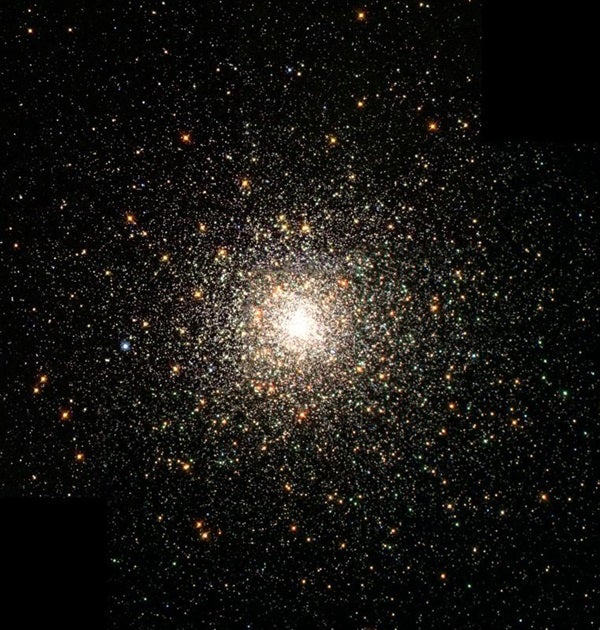For the first time, a team of astronomers has succeeded in investigating the earliest phases of the evolutionary history of our Milky Way Galaxy. The scientists, from the Argelander Institute for Astronomy at Bonn University and the Max Planck Institute for Radio Astronomy in Bonn, Germany, deduced that the early galaxy went from smooth to clumpy in just a few hundred million years.
Led by Pavel Kroupa from the Argelander Institute for Astronomy at Bonn University, the researchers looked at the spherical groups of stars — globular clusters — that lie in the halo of the Milky Way, outside the more familiar spiral arms where the Sun lies. These globular clusters each contain hundreds of thousands of stars and are thought to have formed at the same time as the “proto-galaxy” that eventually evolved into the galaxy we see today.
Globular star clusters can be thought of as fossils from the earliest period of the history of the galaxy, and the astronomers found that they left a hint of the conditions under which they formed. The stars of the clusters condensed out of a cloud of molecular gas (relatively cool hydrogen), not all of which was used up in their formation. The residual gas was expelled by the radiation and winds coming from the freshly hatched population of stars.
“Due to this ejection of gas, the globular clusters expanded and thereby lost the stars that formed at their boundaries,” said Michael Marks from the Argelander Institute for Astronomy at Bonn University. “This means that the present shape of the clusters was directly influenced by what happened in the early days of their existence.”
The forming Milky Way also shaped the clusters, and the Bonn scientists calculated exactly how the proto-galaxy affected its smaller neighbors. Their results show that the gravitational forces exerted on the star clusters by the proto-Milky Way appear to increase with the metal content of their member stars — in astronomy, metals in stars are elements heavier than helium.
“The amount of iron in a star is therefore an age indicator. The more recently a star cluster was born, the higher the proportion of heavy elements it contains,” said Marks. But since the globular clusters are more or less the same age, these age differences can’t be large. In order to explain the variation in the forces exerted on different globular clusters, the structure of the Milky Way had to change rapidly within a short time.
The giant gas cloud from which the Milky Way formed had to evolve from an overall smooth structure into a clumpy object in less than a few hundred million years in order to significantly increase the strength of the forces. This time span corresponds to the astronomically short duration in which the proto-galaxy-sized gas cloud collapsed under its own gravity. In parallel, the globular clusters formed successively within the collapsing cloud. The material from which the somewhat younger globular clusters formed, and which according to the results of this investigation felt stronger attractive forces, was previously enriched with heavy elements by fast-evolving stars in the older clusters.
“In this picture, we can elegantly combine the observational and theoretical results and understand why later forming, more metal-rich clusters experienced stronger force fields,” Kroupa said. “On the back of this work, for the first time we have a detailed insight into the earliest evolutionary history of our galaxy.”










